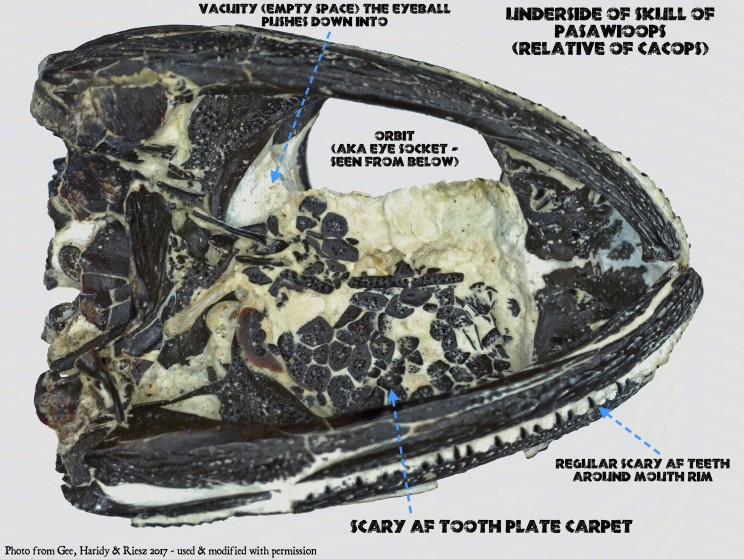Nightmare Mouths of The Permian
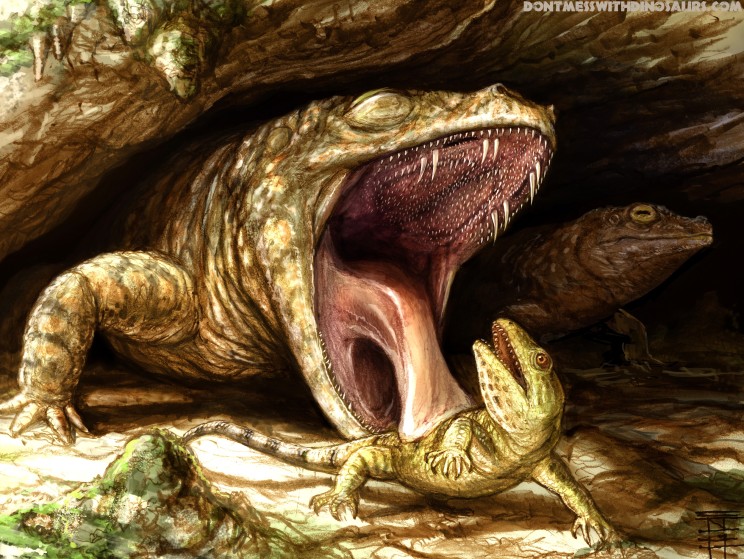
Did you know that some prehistoric amphibians have terrifying teeth covering the entire roofs of their mouths?? Prehistoric monster teeth experts from the University of Toronto Bryan Gee, Yara Haridy and Dr. Robert Reisz have determined how the bizarre teeth covering the roof of the mouth of some prehistoric amphibians such as the chihuahua sized Cacops pictured above developed. It turns out, all of the thousands of tiny teeth these bizarre creatures used to capture and perforate their prey were made of the same ingredients as the teeth around the rim of their mouths, but bizarrely these teeth are not on the jaws, but rather on tiny plates of bone embedded in a flexible layer of tissue on the roof of the mouth. To make things extra nightmarish these tooth-carpets covered empty spaces in the roof of the mouth that their eyeballs would push down into when they swallowed, just like a modern frog. Except unlike a modern frog their eyeballs pushing into their skull would press the teeth down into the prey like a godawful amphibious iron maiden that can swallow you (if you’re a small animal).
You can read and download their scientific paper for free here (shoutouts open access!)
https://peerj.com/articles/3727/
And you can check out the University’s official press release with a video of David Attenborough feeding a bug to a giant monkey frog (with psychadellic skin secretions btw).
One of the things that really hooked me (puns intended) into doing this quick reconstruction of this wondrous little horror from deep time was the environment. Mark MacDougall et al 2017 describe the strange depositional environment that the skeletons of the creatures pictured in my reconstruction were found in. Turns out these fossils were deposited in an ancient limestone cave system, and some of the skeletons were found with calcite cave formations grown into and around them!
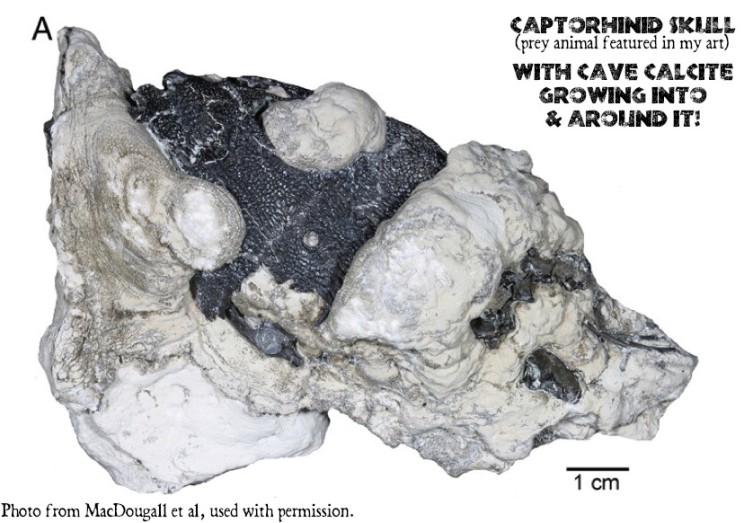
It’s unclear at this point whether the animals were actually living in the upper parts of the cave and got trapped deeper down, as well as washed in by seasonal storms from some outside environment, but the area around these caves in the Permian would have been semiarid, so we thought it was reasonable to speculate that these armored amphibians would’ve been hiding amongst the limestone boulders and crevices that were likely found around the entrances to these caves.

A few months back I just so happened to be exploring a similar modern environment in Nevada, where upthrust limestone has been eroded by water to form numerous caves of various sizes.
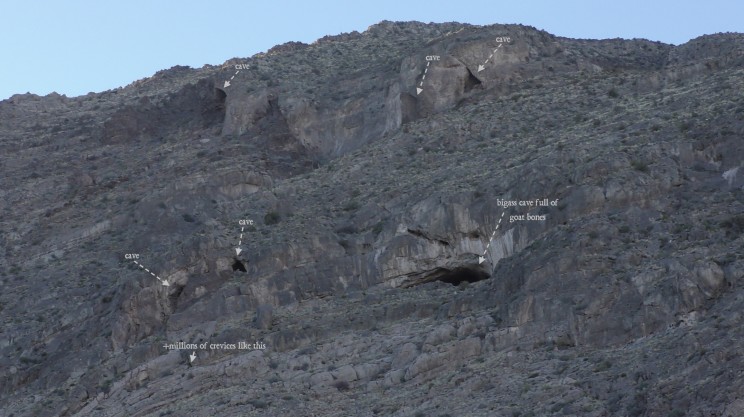
One of the things that struck me was how much cooler and more moist the caves were than the surrounding desert – even just a few feet within the entrance. I also found evidence of animals using the caves, from birds and small invertebrates to mountain goats and puma, who had littered the floor of one of the larger cave entrances I explored with a thick mat of goat poop and goat skeletons, one of which had been recently fed on by a puma.

Thus I thought it would make sense to show a similar dynamic happening at the entrance to a small cave in the permian, with both predator and prey utilizing this uniquely productive micro ecological space to survive in a harsh desert environment…
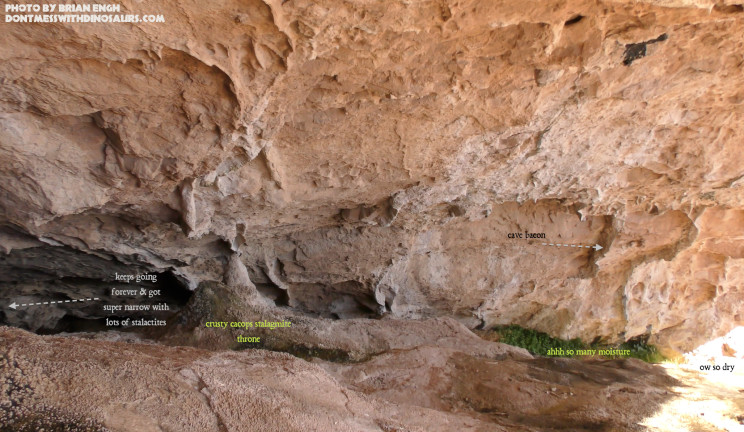
Just a reminder that if you are time traveling and exploring small limestone caves in Oklahoma about 289 million years ago, be careful when putting your hand into small crevices. A Cacops biting you would feel like the world’s slimiest/toothiest bear trap clamping down on your hand and mashing it’s toothy mouth-roof into your flesh by pulling in its damn eyeballs.
REFERENCES, YO:
Gee, Bryan M., Yara Haridy, and Robert R. Reisz. “Histological characterization of denticulate palatal plates in an Early Permian dissorophoid.” PeerJ 5 (2017): e3727
MacDougall, Mark J., et al. “The unique preservational environment of the Early Permian (Cisuralian) fossiliferous cave deposits of the Richards Spur locality, Oklahoma.” Palaeogeography, Palaeoclimatology, Palaeoecology 475 (2017): 1-11.
